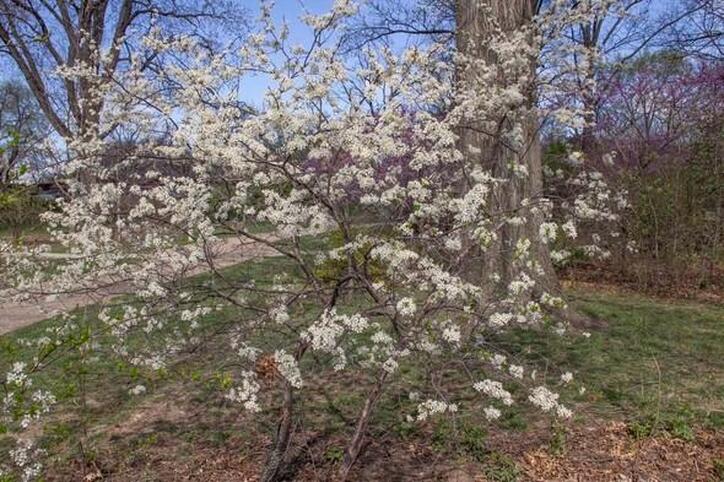|
|
by Bill Graham, Missouri Department of Conservation They bloom in early spring with white or lavender flowers, and they provide food and shelter for songbirds and butterflies. Native trees such as service berry and redbud benefit wildlife and add color to home and business landscaping, said Taylor Neff, MDC community forester. Neff and other MDC foresters recommend early blooming native trees and urge homeowners and landscape services to avoid planting non-native trees such as the invasive Callery pear cultivars. Profusely blooming Callery pear varieties do provide a brief burst of spring color, but they also pose problems, including becoming an invasive enemy to native plants. “They spread across natural areas and crowd out beneficial native species, Neff said. Callery pear varieties are seen blooming during spring in yards and in front of businesses because they have long been planted as an ornamental for landscaping. But they have escaped into forests, woodlands, pastures, parks, and right of ways where they are not wanted. Fast growing, they shade out native plants that also offer beauty and provide more benefits for wildlife. Callery pear varieties host few of the insects that birds depend upon as food. Birds do eat their berries, but that spreads the seeds and furthers the invasion. Callery pear cultivars planted as ornamentals have hybridized and become very invasive. Cultivated varieties of this plant available for sale include Aristocrat, Autumn Blaze, Bradford, Capital, Chanticleer (also known as Cleveland Select), New Bradford, and Redspire, among others. All are invasive and should not be planted. Individual cultivars are considered self-sterile but different cultivars planted near each other can cross-pollinate and produce fruits and viable seed. Besides being invasive, the Callery pear varieties have drawbacks in landscaping use. “They commonly have a poor, multi-stemmed structure which leads them to break easily from wind, ice, and snow,” Neff said. “They can require a lot of maintenance.” Callery pear varieties are also fast growing, she said. This, paired with the poor structure, often means they are trimmed annually, rather than a more normal three-to-five-year pruning schedule you see with native species. Native trees that make good ornamentals are available, including spring blooming varieties. Missouri’s state tree, flowering dogwood, provides white blooms and is attractive in lawns if given shady locations. Serviceberry provides early white blooms but also red berries that are edible for people and songbirds. Other blooming choices include red buckeye, yellowwood, redbud, blackhaw viburnum, hophornbeam and chokecherry. A mix of tree species will provide a variety of blooms and benefits. Native trees host valuable insects that are important food sources birds, and they host the caterpillars for butterflies and moths. For more information about problems from Callery pear trees and how to remove or control them, visit https://short.mdc.mo.gov/4MJ. A good source of information about native plants and trees for landscaping is available at http://www.grownative.org. To learn about an upcoming Callery pear buyback program in the Kansas City area sponsored by Deep Roots KC, visit https://short.mdc.mo.gov/4M3. Serviceberry with white spring blooms and redbud with lavender blooms are natives that add color to landscaping. Photo credit: MDC
Comments are closed.
|
Categories
All
Archives
July 2024
|
Grain Valley NewsGrain Valley News is a free community news source published weekly online. |
Contact Us |



 RSS Feed
RSS Feed
